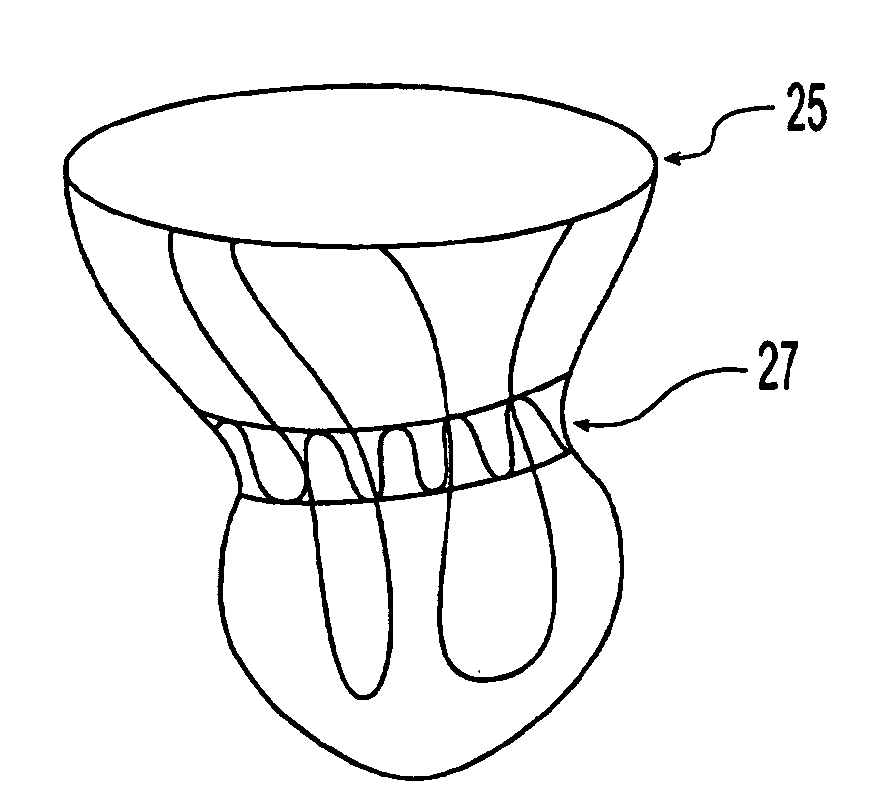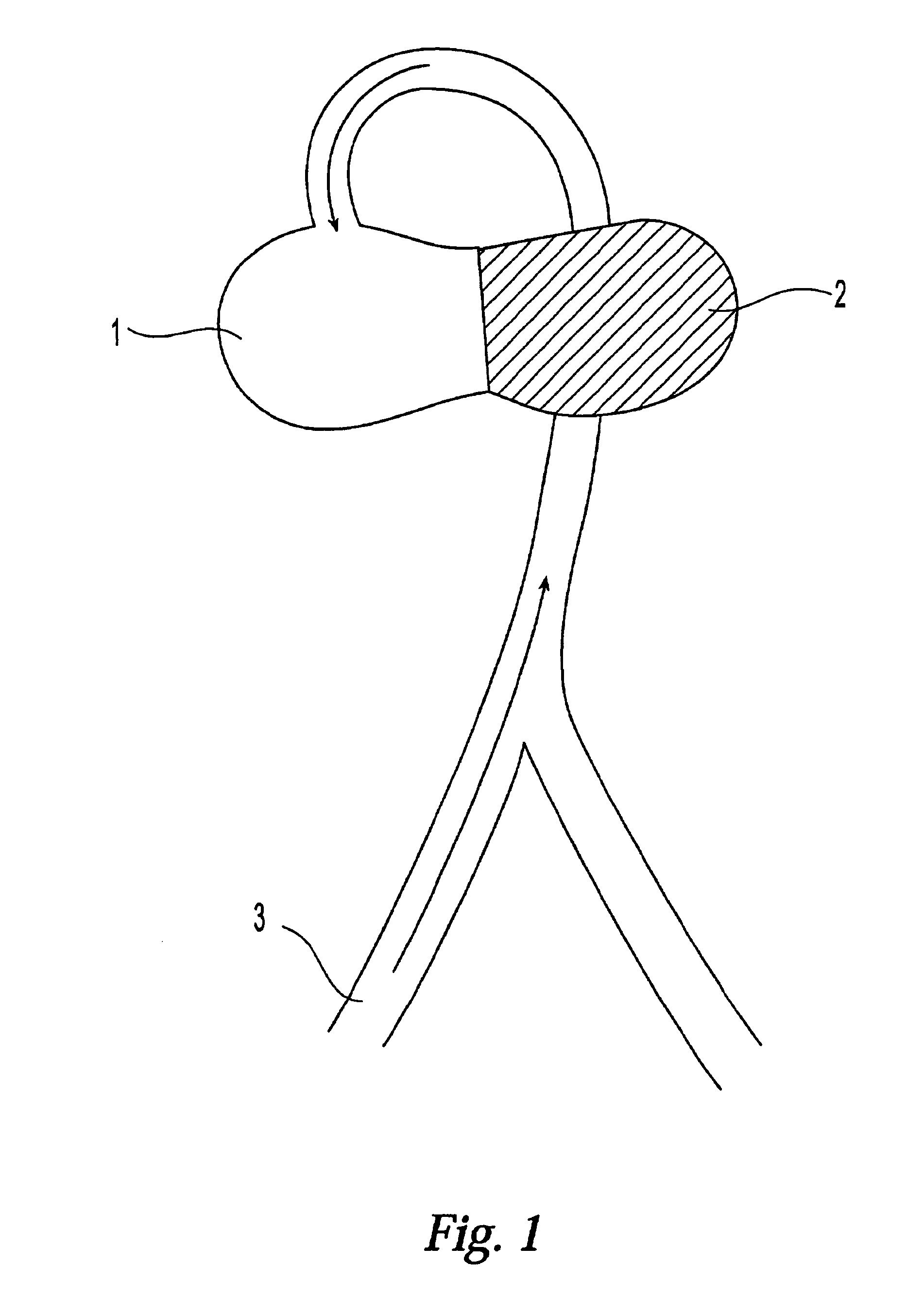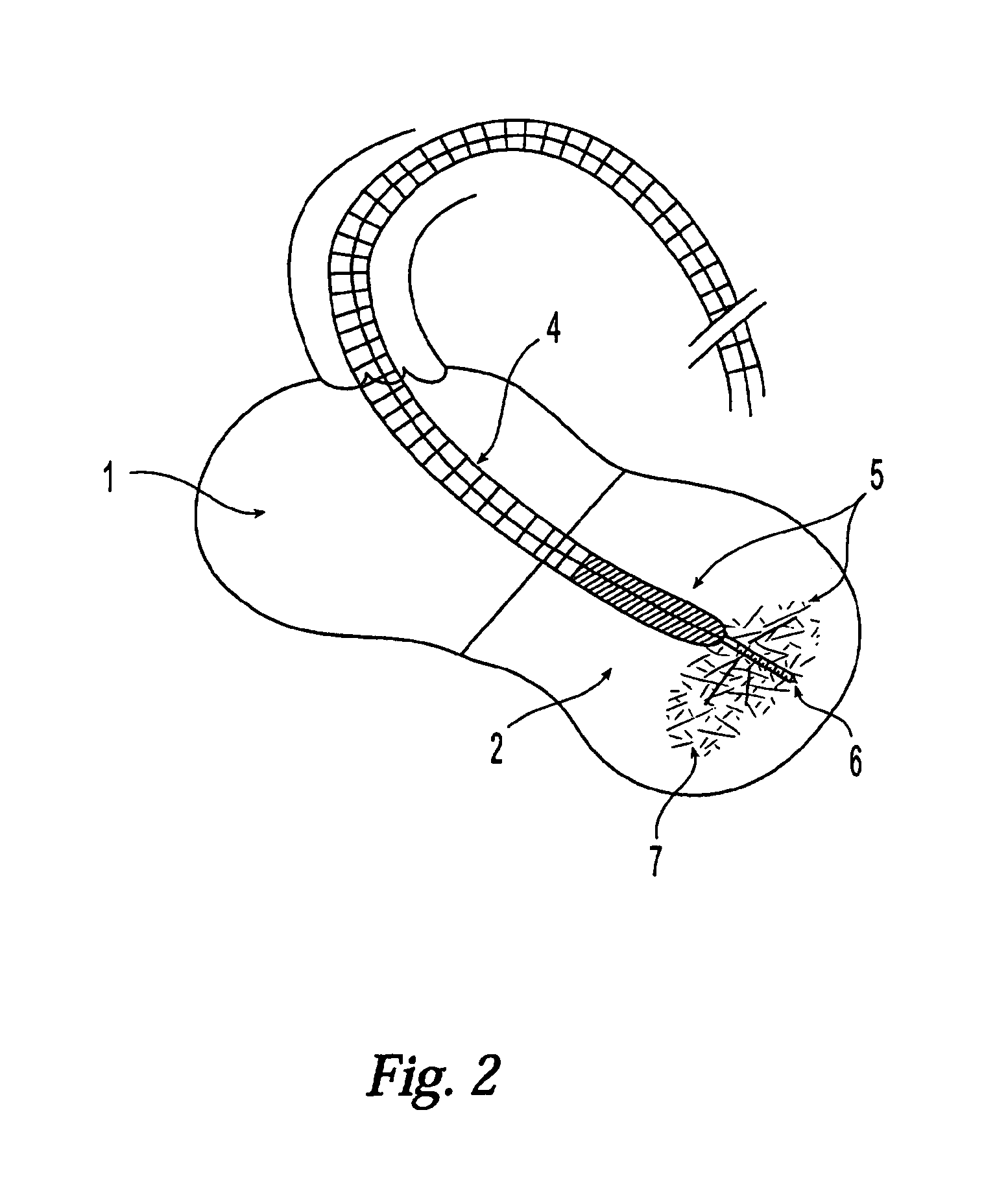Modification of properties and geometry of heart tissue to influence function
- Summary
- Abstract
- Description
- Claims
- Application Information
AI Technical Summary
Benefits of technology
Problems solved by technology
Method used
Image
Examples
example 1
[0120]An angiogram is used to determine the heart rate of a subject, and it is found that D=180, S=100, and F is 44.4%. Computer modeling of the heart is used to image the heart and determine where dead or non-functioning tissue is located.
[0121]A biocompatible filler material of a hydrogel is placed in the heart in the area of the non-functioning tissue. After the material is placed, another angiogram is taken to find that D=170, S=100 and F is 42%. The preceding steps are repeated until F is increased into the range of 60 to 75% and preferably, as close to 65% as possible. The final values of D=150, S=60 and F=60% are acceptable and the procedure is terminated.
example 2
[0122]A left ventricular angiogram was done with a LV catheter and the ejection fraction was determined using the dye outflow technique. Later, a Noga catheter was used to map the ventricular wall motion to determine the areas of the ventricular wall where the tissues are ischemic.
[0123]A biocompatible filler material was introduced in the areas of the ventricular wall where the tissues were found to be ischemic. The ventricular wall mapping was repeated to notice any changes in wall motion. The wall mapping was repeated after 4 weeks, one month and six months to monitor any changes.
example 3
[0124]The experiment of Example 3 was repeated after a filling material consisting of a biological material and a filler material was introduced inside the ventricular wall.
PUM
 Login to View More
Login to View More Abstract
Description
Claims
Application Information
 Login to View More
Login to View More - R&D
- Intellectual Property
- Life Sciences
- Materials
- Tech Scout
- Unparalleled Data Quality
- Higher Quality Content
- 60% Fewer Hallucinations
Browse by: Latest US Patents, China's latest patents, Technical Efficacy Thesaurus, Application Domain, Technology Topic, Popular Technical Reports.
© 2025 PatSnap. All rights reserved.Legal|Privacy policy|Modern Slavery Act Transparency Statement|Sitemap|About US| Contact US: help@patsnap.com



